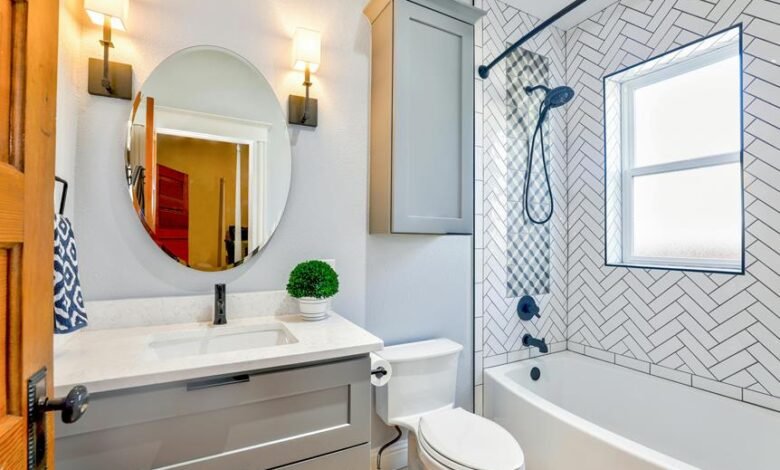Plumbing for Bathroom Renovations

Plumbing plays an indispensable role in the success of bathroom renovations, influencing everything from water pressure to the prevention of future issues such as leaks and clogs. A well-planned plumbing system not only enhances the functionality of fixtures but also ensures compliance with local codes and regulations. Choosing the appropriate materials and engaging skilled professionals are crucial steps in this intricate process. However, understanding common plumbing pitfalls and how to avoid them can make all the difference in achieving a seamless renovation. What are the most critical considerations that could influence your project's outcome?
Importance of Plumbing in Renovations
In any bathroom renovation, the significance of plumbing cannot be overstated, as it serves as the backbone of the entire project. Proper plumbing design is critical to ensuring that water pressure is optimal, enabling fixtures such as faucets, showers, and toilets to function effectively. High water pressure can enhance the user experience, but it must be balanced against the potential for leaks and pipe damage. Therefore, evaluating the existing plumbing system is essential before any renovations begin.
Drain alignment is another crucial aspect that demands meticulous attention. Ensuring that drains are properly aligned prevents water from pooling and mitigates the risk of clogs, which can lead to extensive damage and costly repairs in the long run. Inadequate alignment can result in inefficient drainage, negatively impacting the overall performance of the bathroom.
Moreover, integrating modern plumbing technologies can enhance efficiency and sustainability, providing freedom from frequent repairs and high utility bills.
Common Plumbing Issues to Address
Addressing common plumbing issues is a fundamental step in the bathroom renovation process, as overlooking these problems can lead to significant complications down the line.
One prevalent issue is leaky faucets, which not only waste water but can also increase utility bills and create water damage over time. It is essential to identify the source of the leak, as it may stem from worn washers, corroded valve seats, or damaged O-rings. Properly diagnosing and repairing these components ensures longevity and functionality.
Another common concern is clogged drains. These blockages can result from a buildup of hair, soap scum, and other debris. Utilizing a combination of mechanical and chemical methods is advisable for effective clearing. A plumbing snake or auger can physically remove obstructions, while enzymatic drain cleaners can break down organic matter without damaging pipes.
Regular maintenance, such as cleaning out drains and promptly addressing leaks, is crucial in preventing more severe plumbing issues.
Choosing the Right Materials
When embarking on a bathroom renovation, selecting the right materials is crucial to ensure durability, functionality, and aesthetic appeal. The choice of pipe materials is fundamental, as it directly impacts the longevity and reliability of your plumbing system.
Common options include PVC, PEX, and copper. PVC is lightweight and resistant to corrosion, making it suitable for drainage systems. PEX, on the other hand, offers flexibility, allowing for easier installation, particularly in tight spaces. Copper is renowned for its durability and resistance to bacteria but can be costlier and more challenging to install.
In addition to pipe materials, the selection of fixture options significantly influences the overall design and efficiency of your bathroom. Consider fixtures that are not only visually appealing but also water-efficient, such as low-flow toilets and faucets. These choices promote sustainability while reducing water bills.
Furthermore, ensure that the fixtures are compatible with your chosen pipe materials to avoid future complications. Ultimately, a thoughtful selection of materials and fixtures not only enhances the aesthetic of your space but also supports the long-term functionality of your bathroom plumbing system.
Prioritize quality and compatibility to achieve the best results in your renovation project.
Hiring Professional Plumbers
Selecting high-quality materials and fixtures lays a strong foundation for a successful bathroom renovation, but the expertise of professional plumbers is equally important to ensure proper installation and functionality. Engaging qualified plumbers can significantly impact the efficiency and longevity of your plumbing system.
When hiring a plumber, assess their qualifications, including relevant certifications, licenses, and experience in bathroom renovations. A competent plumber will possess a thorough understanding of complex plumbing systems, enabling them to navigate potential challenges effectively.
In addition to their technical skills, a reputable plumber should provide clear renovation timelines, ensuring that you are informed of the project's progress. Timelines are crucial for coordinating other tradespeople involved in the renovation, such as electricians and tile installers. Establishing a realistic timeline allows for a smoother workflow and minimizes potential delays.
Moreover, communicating openly with your plumber about your vision, budget, and any specific requirements will foster a collaborative environment. This partnership can lead to creative solutions that enhance your bathroom's functionality and aesthetics while adhering to best practices in plumbing installation.
Ultimately, hiring a professional plumber with the right qualifications is an investment that can save time, reduce stress, and ensure a successful renovation.
Essential Plumbing Codes and Regulations
A comprehensive understanding of essential plumbing codes and regulations is crucial for any bathroom renovation project. Compliance with these codes ensures safety, efficiency, and legality in your plumbing system.
Below are key considerations to keep in mind:
- Local Plumbing Regulations: Always consult with local authorities to understand specific requirements that may affect your renovation, including permits and inspections.
- Bathroom Fixture Codes: Adhere to established codes regarding the installation and spacing of fixtures, ensuring they meet the necessary standards for functionality and accessibility.
- Water Supply Lines: Regulations dictate the materials and sizing for water supply lines, often requiring specific types that are resistant to corrosion and suitable for potable water.
- Drainage and Venting Systems: Proper drainage and venting are critical to prevent sewer gas entry and ensure effective waste removal.
Follow local codes detailing pipe sizes and installation techniques.
Conclusion
In the intricate dance of bathroom renovations, plumbing emerges as both the unsung hero and the potential villain. While homeowners may envision a flawless aesthetic transformation, neglecting plumbing intricacies can lead to cascading failures beneath the surface. Ironically, the pursuit of beauty often overshadows the underlying systems that sustain it. Thus, a meticulous approach to plumbing, encompassing material selection and compliance with regulations, ultimately determines whether a renovation thrives or succumbs to the unseen chaos of water mismanagement.



